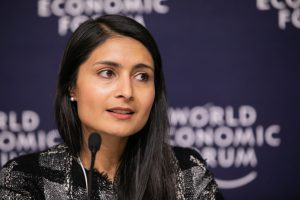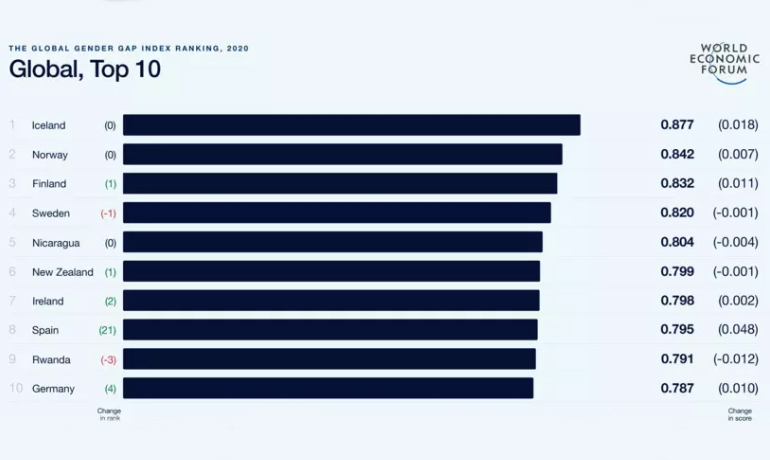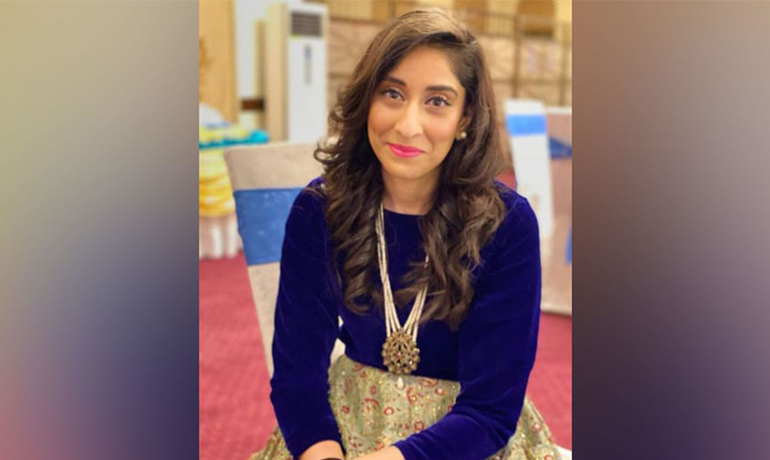The World Economic Forum Global Gender Gap Report 2020 came out recently; sending many of us into a flurry of despair. It stated that at the present rate of progress, it could take us nearly 100 years to get to gender parity (99.5 years to be exact) and reach a gender-equal world. Another dismal fact means none of us would see the gender parity in our lifetime. The report stated that Pakistan was the third-least performer among countries in terms of gender parity; ranking 151 out of 153 counties. The report spelt out quite a doom and gloom scenario, which needs to be immediately addressed on a national scale.
Gender parity is, perhaps, the most discussed on everybody’s agenda nowadays. It is an acknowledged fact that no economy can be considered successful without the added contribution of half of the world’s population towards its economic growth. It is also a key component of a sustainable future, as prescribed by the UN. The inclusion of the female population in policy-making legislation will, indeed, make for a fairer world.
So let us take a look at what is happening on the ground and the possibilities of Pakistan trying to close this gap.
The World Economic Forum’s Global Gender Gap Index has measured gender differences since 2006 comprising of four fundamental areas, namely (1) Economic opportunity (2) Health and survival (3) Educational Attainment and (4) Political Empowerment. The Index also charts the progress made by countries in trying to close the gender gap through underlying solutions as well.
In Pakistan, here are some things we can address as a country. Firstly, we must have a clear movement on a national level to support the trend towards legislation to a more inclusive workforce. Pakistan shows a mere 18 per cent in the workforce (WEF report). However, the provision of jobs, specifically keeping mind gender parity in the workplace, should be a part of the law for firms to re-structure their policies. Women should be supported with economic means to start small businesses whether it be in terms of funding. Micro-financing for businesses should be looked into another approach. Empowering by Digitised banking is another strong route to follow on as those, which were once left unaccounted for now come into a database with ease of access and technology awareness. A new element has come in: the advent of e-commerce. The government can also look into loan-planning, education and finance for such ventures on a larger scale.
The government of Pakistan is already conducting a program, which involves the re-skilling of workers online. Something, which will be highly beneficial in the long run.
Second is Health and Survival. The gauge of the sex ratio at birth and the health life expectancy between genders. A better medical system and access to it are keys to a developing economy where in the first place, they are struggling with the lack of basic medical necessitates. We would need access to health and medical care programs, especially pre and post-natal care as well as awareness to raised educational standards of medicine. The government of Pakistan has already expanded a healthcare micro-insurance program, which was first started in 2015 (now fully developed), to cover the poorest districts across Pakistan. This program covers maternal healthcare services, women’s health issues and family planning as well as population data gathering.
Gender parity is, perhaps, the most discussed on everybody’s agenda nowadays
Thirdly, education is something that goes without saying. The movement to a fairer world will not happen without the girl child being educated. Statistics report that only 46 per cent of women in Pakistan are educated beyond a certain level. It would be up to the government to ensure the law of the land that every child, no matter what status they are in, go to school. Perhaps, legislation to open up more free schooling is needed so that children gain education instead of seeking employment. Making this the priority would be a vital contribution in the long run for the country.
Another point that has come up is relevant education specific to catering to the future. The acknowledgement of the looming fourth industrial revolution is something that will reshape every industry and business in the world. This brings us to awareness and education about STEM. It was shown that Nadirshaw Edulji Dinshaw (NED) University of Engineering & Technology in Pakistan had 70 per cent women as engineering graduates, it is still a very select group being educated.
The encouragement of the female population towards the field of science, technology, engineering and mathematics would be the next step of the government to something, which should be thoroughly researched and implemented through measures of educational assessment bodies and legislative features, from guidance counselling to reskilling and even educational grants, loans and scholarships.

World Economic Forum Managing Director, Saadia Zahidi, has written several interesting articles and been on several panels in regard to gender parity as a global problem. Her viewpoints very clearly indicate a focus on STEM education. Although she clearly asserts that all women should not just all become “coders” and diversity is the key, she encourages the welcoming of a STEM-focused education as it would be a key player in accelerating us into the fourth industrial revolution.
Fourth is political empowerment. Encouraging women towards higher posts of governance is another action, which must be heavily implemented and accommodated for. Certainly, an added effort to move women towards policy-making roles. A gender-inclusive approach through legislation would factor in half of the world population to better decision-making.
Gender Inclusion in Pakistan is something that we need to address. However, the solutions cannot be taken from the viewpoint of one-size-fits-all. Pakistan, as an emerging economy, has a different structure from a developed economy. Culture and traditions play a huge role in the economic setup itself (Pakistan’s population levels of obtaining economic means which cannot be gauged in entirety at the time due to it mostly population being unbanked or lack of digitisation and Identification in vast areas). Cultural heritage, tribal populous and an agri-economy do not account for those earning in non-corporate organisations and have been unaccounted for, as report structures and data are gauged on organisational structural data.
An approach to address some of these issues comes through the introduction of a new social services program, which seeks a tiered-solution approach to improve economic empowerment for women. From the provision of basic necessities, like income payouts for the lowest-income tier, to the movements towards a digitised payments program providing medical care as well as a means of identifying women, which were once not accounted for in remote areas.
In a united effort to create a fairer world, we must take certain measures into an accelerated pace to survive. Solutions to be developed would have to be designed to address societal structures and culture. It is now up to the policymakers to increase the work skills techniques to achieve the next step towards the jobs market in the fourth industrial revolution and head towards a future-ready economy.






